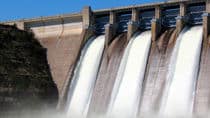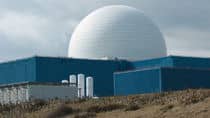
Alternative Energy
Alternative Energy Towards a Cleaner World
![]() We know that Alternative Energy is the power derived from sustainable and renewable resources and a lifeline for our existence. It fuels every aspect of human life, shaping the quality of our lives, and dictating the prosperity of nations.
We know that Alternative Energy is the power derived from sustainable and renewable resources and a lifeline for our existence. It fuels every aspect of human life, shaping the quality of our lives, and dictating the prosperity of nations.
As the world’s electricity needs skyrocket, we find ourselves relying more on electrical energy for our day-to-day activities. This dependence, particularly on fossil fuels, calls for a significant shift towards different kinds of Alternative Energy Sources.
Defining Alternative Energy
Imagine energy that does not rely on natural gas, coal, or any fossil fuels, and therefore, emits negligible or no greenhouse gases. That’s what we call Alternative Energy. It offers an eco-friendly solution that doesn’t contribute to climate change.

Then we can say that alternative energy refers to renewable energy sources, such as solar, wind, and hydroelectric power, that can replace fossil fuels and reduce environmental impact.
Most tend to associate alternative energy with solar panels on roofs. But it’s much more than just harnessing the sun’s energy.
From wind and water to nuclear and ethanol biofuels, alternative energy sources have been utilized for centuries for diverse applications like cooking, heating, farming, and transportation. Some are new developments of traditional technologies, while others are innovative solutions.
The Essence of Energy
Often used without much thought, the term ‘energy’ is applied in various contexts. Simply put, energy is the capacity to do work, to make things happen. But it’s much more than that. It’s one of our most valuable resources and exists in various forms.
The sun, a giant fusion reactor, is the primary source of all energy on Earth. Once this energy leaves the sun, it transforms into other forms, such as heat and light, creating wind, rain, rivers, and waves. These natural phenomena can be harnessed as alternative energy sources.
The Need for Alternative Energy
The term ‘alternative energy’ is used to describe energy sources that are alternatives to the traditional fossil fuel sources of oil, natural gas, and coal. While none of these ‘alternatives’ can match oil in flexibility and energy content, oil, like other fossil fuels, is a finite resource. The inevitable depletion of oil underscores the need for alternative energy sources.
The three types of fossil fuel energies of Coal, Oil and Natural gas are the most important fuels we use today and the modern world relies heavily on these non-renewable sources for the majority of its energy needs.
But these sources of energy will not last forever and with a reduction in global fossil fuel reserves, an increasing threat to their continuing security, combined with their contribution to climate change which has proved to be a major cause of environmental issues and harmful carbon dioxide (CO2) emissions, we must now consider the alternatives.
Even if we had an unlimited supply of fossil fuels, is alternative energy better for the environment, the planet and human life generally. The advantages of Alternative Energy is that it is renewable, sustainable or potentially sustainable, and environmentally benign. We often think of alternative energy technologies as “clean” or “green” because they produce very few if any pollutants.
However, the disadvantages of alternative energy are their low density, higher initial investment costs and variability in its source requiring the need for energy storage or some form of alternative backup power such as a generator when the sun does not shine or the wind does not blow.
Realising that oil is finite in practical terms, there is increasing attention given to what alternative energy sources are available to replace oil. As the demand for alternative energy sources increases each year due to the need for clean and renewable sources of energy.
Alternative forms of energy are all around us in the wind, the waves and tides and in the energy from the Suns abundant resource of power. There are six main forms of alternative energy that exist now and which can be divided into two categories of either renewable or non-renewable energy sources of one or more of the following.
The 2 Main Categories of Energy Sources
- Renewable Energy: Renewable energy can be defined as energy which is obtained from natural and persistent sources of energy occurring in the immediate environment such as solar (sunshine) energy. This energy is constantly being replenished at a rate faster than it is being consumed, making this type of energy an “infinite resource”.
Renewable energy passes through the environment as a current (wind), electromagnetic radiation (sunlight) or as a flow (water), irrespective of there being a device to intercept or harness this power. Such energy may also be called “Green Energy” or “Sustainable Energy”. - Non-renewable Energy: Non-renewable energy on the other hand, is defined as energy obtained from non-renewable static sources of energy. These energy resources remain buried underground unless released by human interaction. Non-renewable energy sources are generally called fossil fuels which includes coal, petroleum oil, natural gas and some radioactive nuclear fuels.
This energy resource is being used up at a rate faster than it can be replenished by the Earth’s natural systems, making this type of energy a “finite resource”. Non-renewable energy is stored potential energy, and an external action is required such as combustion to initiate the supply of energy for practical purposes. Such energy supplies are generally called “Finite Supplies” or “Brown Energy”.
The most common alternative energy source available today is hydro-electric power followed by wind power and solar power. An overview of the various kinds of alternative energy follows but first we must differentiate between an alternative energy, and a renewable energy resource.
Alternative energy refers to any form of energy which is an alternative to the traditional fossil fuels of oil, natural gas and coal. Renewable energy are the forms of alternative energy that are renewed by the natural processes of the Earth, such as sunlight from the sun or wind from the air, and so are therefore environmentally friendly.
Alternatives to Non-renewable Resources
The main objective of these alternative energy tutorials to cover all the different types of alternative and renewable energies which can be used as an alternative to non-renewable resources. Then we will begin with an overview of the main six forms of renewable energy sources.
 1. Hydro Energy: The longest used form of alternative energy and power dating back thousands of years. Dams and water wheels use the potential and kinetic energy of water as a source of power to grind corn and produce flour.
1. Hydro Energy: The longest used form of alternative energy and power dating back thousands of years. Dams and water wheels use the potential and kinetic energy of water as a source of power to grind corn and produce flour.
Hydro energy accounts for almost a fifth of all electricity generated worldwide by using dams and hydro-electric power generation. Harnessing the energy contained in water flowing down hill to a lower elevation, it is highly efficient but limited by the necessity of suitable natural resources such as mountains, lakes and gravity. 2. Solar Power: Sunlight contains thousands of times more available energy than humans could ever use, but harnessing it can be expensive. One common method is photovoltaic cells.
2. Solar Power: Sunlight contains thousands of times more available energy than humans could ever use, but harnessing it can be expensive. One common method is photovoltaic cells.
They turn sunlight into electricity but only work at a maximum efficiency of little more than 20 percent. They are also expensive to manufacture and buy. Solar heating systems use flat panels to capture the suns warmth to heat domestic hot water with large commercial installations using mirrors to reflect the suns heat onto a central heat absorber for maximum efficiency. 3. Wind Energy: Another well established form of alternative power used for hundreds of years by millers and windmills. The sight of massive wind turbines gently whirring atop a large hill or on high ground is now becoming increasingly common.
3. Wind Energy: Another well established form of alternative power used for hundreds of years by millers and windmills. The sight of massive wind turbines gently whirring atop a large hill or on high ground is now becoming increasingly common.
However, such turbines and associated wind farms has prompted many discussions amongst environmentalists, with some green activist arguing long lines of wind turbines scar the natural beauty of the countryside, produce environmental noise and can kill too many birds with their constantly rotating blades. 4. Wave and Tidal Energy: Although still in its development stage, these are two ocean-based technologies with high potential for providing a clean, free alternative energy source in the future.
4. Wave and Tidal Energy: Although still in its development stage, these are two ocean-based technologies with high potential for providing a clean, free alternative energy source in the future.
Wave power uses the kinetic energy of the ebbing and flowing of the oceans waves and tides by trapping water in tidal barrages or through underwater tunnels, which is then used to rotate tidal turbines. Tidal power also uses large turbines fixed to the sea bed or just below the surface of the waves to capture the energy from strong tidal currents. 5. Nuclear Energy: While not strictly a renewable energy source, nuclear energy can be thought of as an alternative form of energy compared to fossil fuels.
5. Nuclear Energy: While not strictly a renewable energy source, nuclear energy can be thought of as an alternative form of energy compared to fossil fuels.
There is a limited amount of Uranium available globally which has to be both mined and refined so is considered by many as a non-renewable energy source, but with the design of modern nuclear reactors becoming safer and more efficient than those used in the past, nuclear energy is becoming powerful enough to have a real impact on the reduction of fossil fuel usage. 6. ”Alternative” Fossil Fuels: Many believe that there is enough oil, coal and natural gas resources left in the Earth to last us at least another 500 years and that burning fossil fuels more cleanly and efficiently is the way forward.
6. ”Alternative” Fossil Fuels: Many believe that there is enough oil, coal and natural gas resources left in the Earth to last us at least another 500 years and that burning fossil fuels more cleanly and efficiently is the way forward.
Suggestions include “storing” the harmful carbon dioxide emissions deep underground, mixing and co-firing coal with biomass, as well as improving the way we excavate and burn fossil fuels. To many this is the most feasible way of saving our non-renewable energy supplies and the environment.
Are These Energy Sources Enough
Our interpretation of Alternative Energy is better because “alternative energy sources” or “alternative energy supplies” could have a different meaning much broader than simply Alternative or Renewable Energy. Alternative energy is all about energy sources that are distinct or an alternative too, or a replacements of, conventional fossil fuels. Most types of alternative energy depend on obvious, natural sources of energy and there is nothing new about these energy sources.
People have always used the sun to light their homes, dry their clothing or heat their food for thousands of years, but many alternative or renewable energy sources, especially hydroelectric power, wind, and solar power, are already providing significant amounts of energy or at least are capable of providing significant amounts of green energy in the near future. These energy sources have many advantages over fossil fuels, but they also have their limitations.
Can Alternative Energies fill the gap?, there are no easy answers to the energy problem, even the best energy technologies for the future may be complicated, dangerous, and expensive. However, one thing is certain all ways of making energy harm the Earth to some extent. Therefore, no matter where our energy comes from, we should not waste it.
Living a more energy efficient life is easy as scientists and engineers work on more efficient refrigerators, cars, lights, and other devices etc. We can all do our bit to save a significant amount of energy just by turning “off” the lights, TV and other electrical devices when we are not using them. Over time, we can all make different choices about how much energy to use and how to use it. A more energy efficient world is a world that is easier to supply with energy, whatever the source.











I would agree that alternative energy is enough to meet global energy demand if countries are willing to pay the cost of harnessing the various streams of alternative energy. It may not be cheaper than energy from fossil fuel. The ultimate source of supply the sun is infinite.
Great read. I am curious as to why ethanol production from biomass (corn, wheat, sugarcane and other similar raw materials) as a renewable energy is not mentioned in this overview. This industry is thriving in the USA and the produced ethanol is blended with gasoline as a way of reducing fossil fuel consumption.
I do agree that there is still a significant amount of fossil fuel underground, but the concern is still emissions. Can we make it more environmentally friendly with the “alternative” fossil fuel technologies?
Please read our tutorial about Ethanol as a Fuel
hi